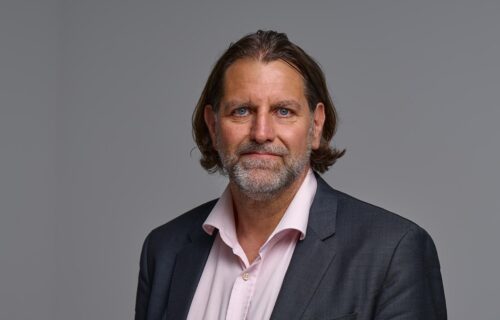There is a significant gap in demand for electricity from wind and solar energy both in Germany and in the European Union, which will continue to grow in the coming years. In order to set up photovoltaic and wind power plants, institutional and private investors are available as investors who want to invest in power generation plants by means of funds. Fund managers in particular who have previously worked in the classic real estate sector see investments in renewable energies as an opportunity to expand their product range to include an ESG-compatible asset class with good earnings and return prospects. On the one hand, the systems are being built on specially leased areas. On the other hand, roof areas and facades of existing properties can also be used. However, there are legal and regulatory hurdles to overcome for the planning, construction and operation of the plants.
These are the core results of today’s online press conference “Investments in Renewable Energies – Opportunities and Risks of an Asset Class”. Andreas Loeschel, Chair of Environmental/Resource Economics and Sustainability at the Ruhr University Bochum, Kristof Krull, Head of Infrastructure at HIH Invest Real Estate, Michael Sorg, Head of Renewable Energies at GARBE Industrial Real Estate, and Dr. Alexander Koch, attorney and partner at Hogan Lovells International.
Significant gap in demand for solar and wind power plants:
Renewable energies are an integral part of the European energy transition, with solar energy and onshore wind turbines playing by far the largest role in electricity generation in Germany. In the course of the Ukraine war, the need for green electricity has once again increased significantly. Prof. Dr. Andreas Loeschel, Chair of Environmental/Resource Economics and Sustainability at the Ruhr-Universität Bochum, says: “Up until now, the plan was to generate almost two-thirds of the electricity from renewable energies by 2030, but the already high expansion targets have been since the so-called Easter package of the Federal Government this year has now become even more ambitious with 80 percent. In order to achieve the new target, plants for an additional 10 gigawatts per year must be built for wind energy on land and 22 gigawatts per year for solar energy. As early as 2035, the power supply in Germany should be based almost entirely on renewable energies.”
Stable and predictable income:
But who is providing the capital for the expansion of renewable energies? “Funds and banks are already among the three largest groups of owners of renewable energy plants,” says Loeschel. Kristof Krull, Head of Infrastructure, explains: “Such assets are becoming increasingly interesting for investment funds because they generate good returns. This is mainly due to stable and predictable yields, because solar radiation and wind levels are easy to estimate. The market price level for electricity will remain at a high level in the future, while the costs for electricity generation will remain manageable. This is mainly due to the fact that solar and wind systems use finite resources that are available free of charge. In addition, scaling effects come into play with large-volume photovoltaic and wind power projects, which reduce the construction and operating costs of the systems.” This year, HIH Invest launched the “HIH Green Energy Invest” fund, which invests in photovoltaic and wind power systems in selected European markets invested and for which an average annual dividend yield of 5.50 percent has been announced.
Increase in return and value through photovoltaic systems on roofs and facades:
Michael Sorg, Head of Renewable Energies at GARBE Industrial Real Estate, explained the considerable potential in the large roof and simple facade areas of logistics properties in order to use them to generate solar power. The company is in the process of equipping its managed logistics real estate portfolio with photovoltaic systems and sees a potential area of six million square meters. “This means that between 400 and 600 megawatts of PV capacity can be installed for sustainable electricity production. The tenants’ own requirements are comparatively low at 10 to 20 percent, so that a lot of electricity can be fed into the grid. Arithmetically, about 330 households can be supplied with green electricity for every 10,000 square meters of roof area,” says Sorg. The owners of the real estate would have the opportunity to increase their returns because they receive rental payments for using the roof areas and can increase the value of their properties through the better electrical infrastructure.
Planning law and approval procedures as obstacles:
Obstacles to the expansion of renewable energies lie in the legal and regulatory framework. dr Alexander Koch, lawyer and partner at Hogan Lovells International, says: “The planning law and the area designation represent a major challenge, especially for onshore wind energy, not least because an enormous distance to settlements has to be maintained. Approval procedures are sometimes lengthy and extensive, also because legal protection options for neighbors and associations can lead to long-term administrative procedures.” Koch is confident about the future: “The expansion of renewable energies is now of outstanding public interest and is therefore gaining increased importance in the context legal consideration processes. The legal and regulatory hurdles for onshore wind farms will be lowered and the remuneration for solar energy will become more attractive.”
